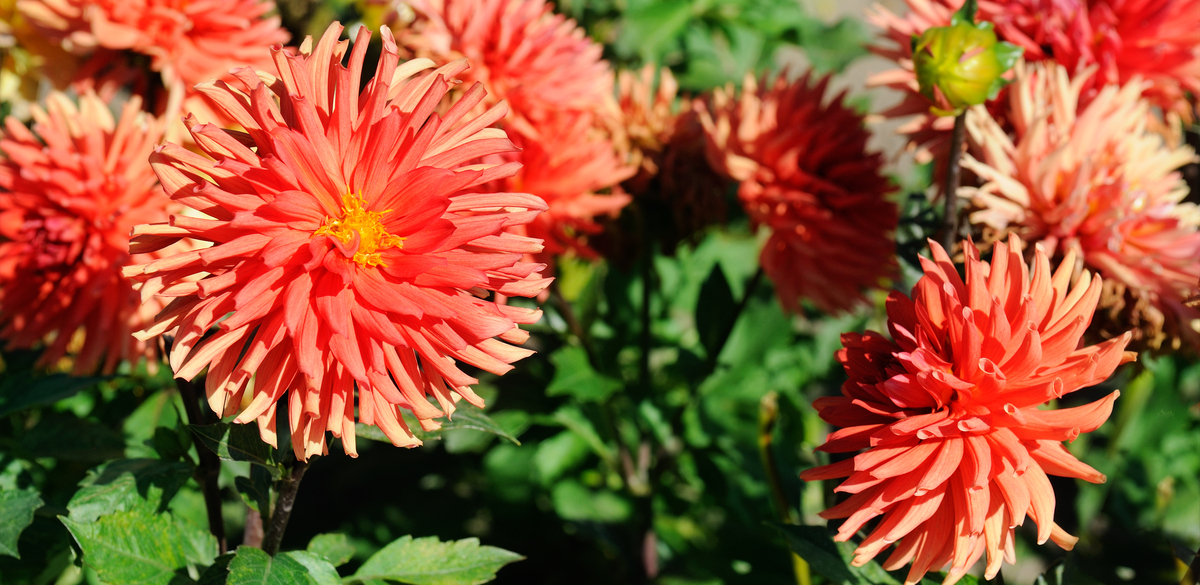Dahlias are the queen of the late summer garden, and while there are hundreds of varieties of dahlias, dinner plate dahlias definitely steal the show! This guide goes over all the important information and steps to create a stunning dinner plate dahlia garden of your own.
Dinner Plate Dahlia Overview
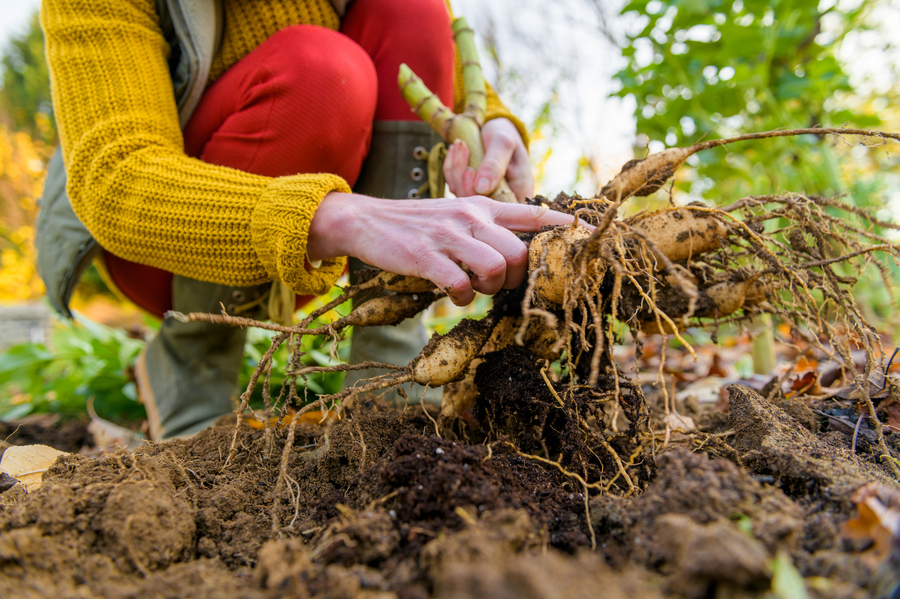
Dinner plate dahlias are grown from tubers, which are enlarged starchy roots designed to store water and nutrients for the dahlia plant. Tubers sprout from eyes that are found around the base of the stem. Dinner plate dahlias are perennials, however, in colder climates, the tubers are dug up for storage each winter.
Dinner plate dahlia heights range from 3 – 5 feet and the dinner plate dahlia plants are quite bushy with attractive green foliage. The dinner plate dahlia size can range from 8 – 12 inches across for the flowers themselves.
Anatomy of a Dahlia Tuber
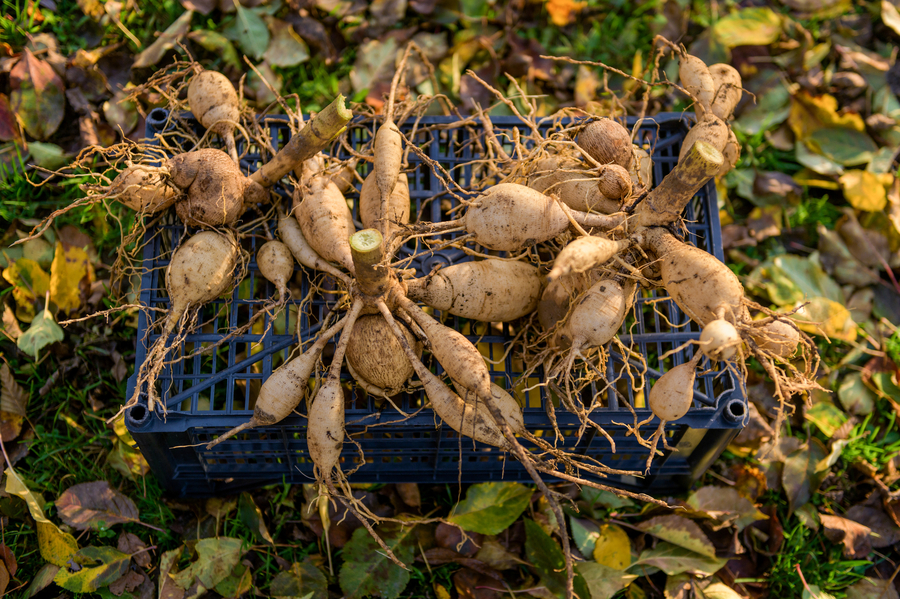
Healthy and viable dinner plate dahlia tubers consist of three main parts. It is important to have all of these parts intact to grow a healthy plant.
- Crown – This is the top of your tuber and where the stalk from last year was attached. This is the part where the eyes will sprout from. If you can’t locate the eyes don’t panic, some dahlias don’t readily show their eyes until they are starting to sprout. Alternatively, if your dahlia tuber is already sprouting and you break off a sprout, it will readily grow a new one.
- Neck – This is the most delicate part of your dinner plate dahlia tuber. The neck attaches the tuber to the crown. If it is broken, it will not be able to send energy from the tuber to the crown.
- Tuber – This is the storage unit for your dahlia plant. The tuber holds nutrients and water that feeds your dinner plate dahlia until it has formed a root system in the ground.
How to Plant Dinner Plate Dahlia Tubers
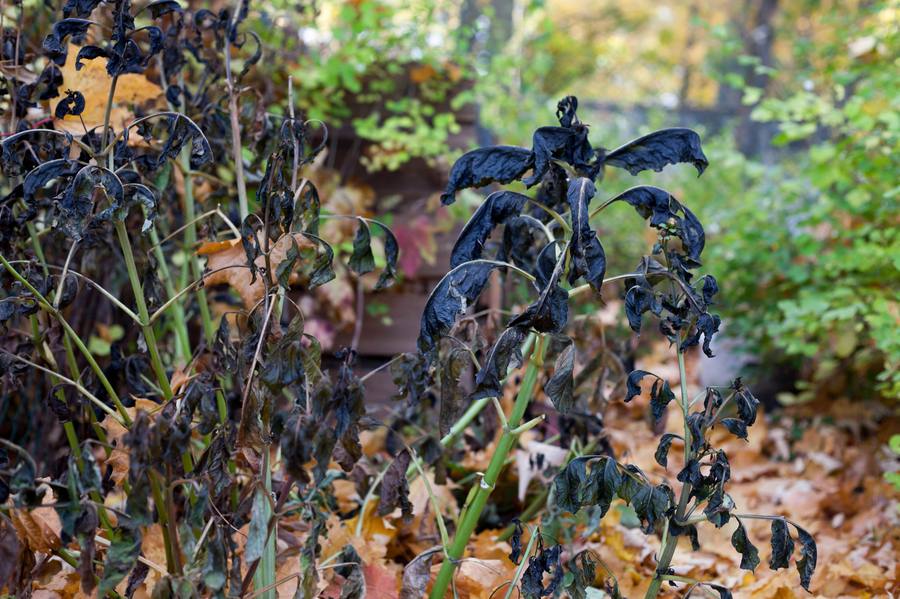
To plant dinner plate dahlias, you must wait until your last frost has passed. Once the danger of frost has passed, you can decide where you want to plant your dahlias.
Dinner plate dahlias can be planted in a pot, but they do best when planted directly in the ground. A dinner plate dahlia plant needs full sun and rich, well-draining soil to produce healthy plants with lots of flowers.
Dinner Plate Dahlia Planting Instructions
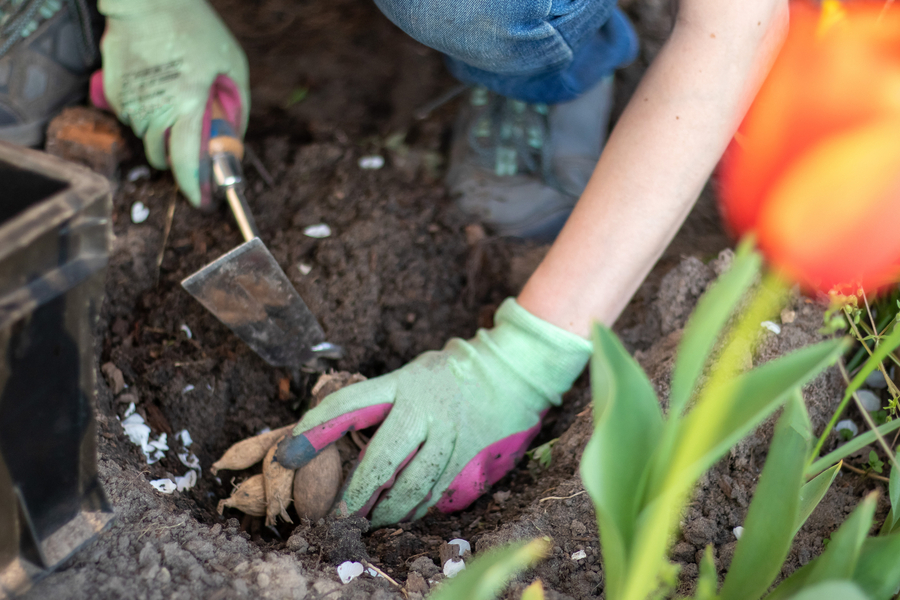
- Dig a hole 5 – 6 inches deep and put some compost and a sprinkle of fertilizer into the bottom of the hole.
- Place your dahlia tuber horizontally in the hole with the eyes facing upwards. The eyes can sometimes be tricky to spot, but they are knobby bumps that appear on the crown of the tuber. It’s ok if you can’t see the eyes, as long as you have all three parts it should sprout. Plants are resilient and the shoots will find their way to the surface of the soil.
- Once you have planted your dahlia tuber, do not water it until you see green sprouts emerging from the soil. This can sometimes take up to two weeks. If it rains before the sprout emerges that’s ok, but I generally try to find a dry week to plant my dinner plate dahlia tubers. Too much moisture in the soil can lead to your tubers rotting before they sprout.
When deciding on dinner plate dahlia spacing, there are a few options. Cut flower production dahlias are generally planted 1 ft apart in rows.
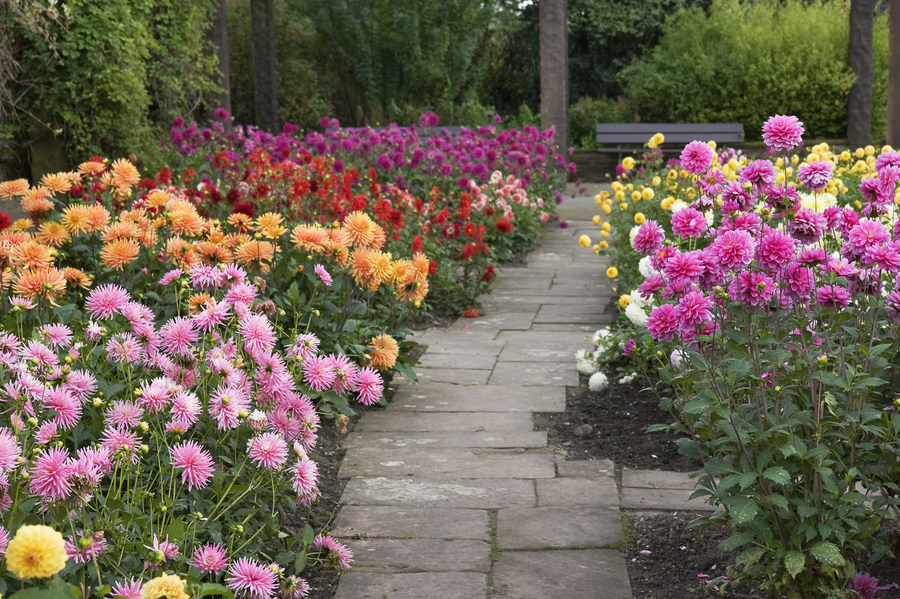
If your dinner plate dahlias are in a more ornamental setting, you can disperse them throughout your garden, but be sure to give them approximately 2 ft. on each side so they do not smother other plants. Giving your dahlia plants more room enables airflow and discourages diseases such as powdery mildew.
Staking
Dinner plate dahlia flowers need staking because the flowers are top-heavy and staking prevents the plants from toppling over under the weight of the flowers.
There are a few different ways to stake dahlias but the easiest way is to insert a stake into the ground at the time of planting. To do this find a stake that is fairly sturdy and able to support the plant. You can use bamboo stakes or metal stakes from your local garden center.
Insert the stake firmly into the ground approximately 4 – 6 inches from the crown of your tuber before you cover it with soil. As your dahlia grows you will attach it to the stake to stabilize the plant. Make your first attachment once your plant has reached approximately 2 ft. and again at 3 to 4 ft.
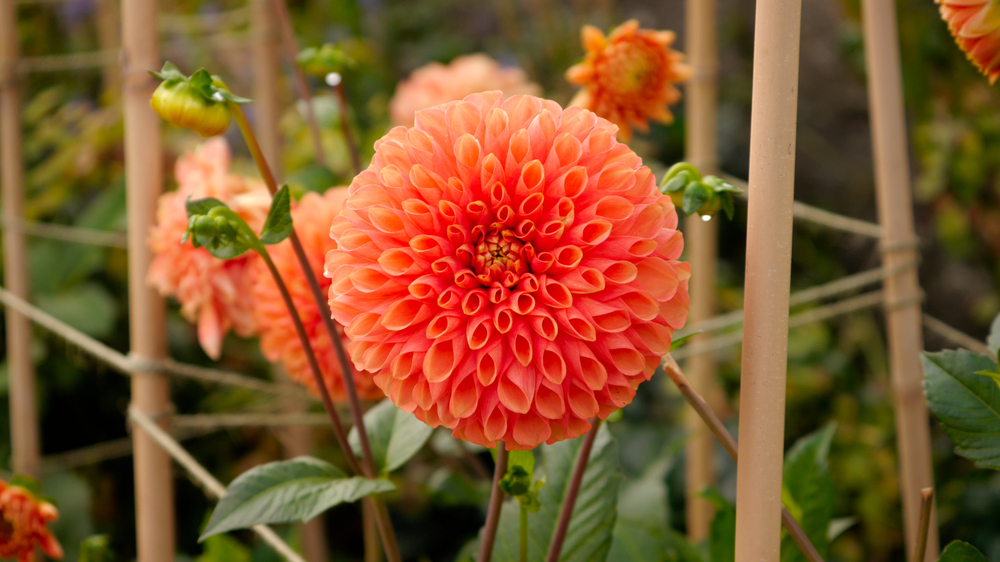
If you are growing a row in a straight line, you can use the corralling method for staking. For this method insert your stakes at the corners and at 5 ft. intervals along the line of dahlias, both on the front and back of your row.
Once your dinner plate dahlias have reached 2 feet tall, run a durable string between the stakes to create a cage around the dahlias. This will be repeated a second time higher up once the plants have grown taller. This corralling method is commonly used by cut-flower growers when they are growing rows of dahlias for production.
Dinner Plate Dahlia Care
Once your dinner plate dahlia tubers have sprouted above the surface you can begin watering them. Dahlias need very little water until they have reached 6 – 12 inches tall. After this point, they should be watered regularly to maintain moisture, but avoid waterlogging the soil as dahlia tubers are prone to rot.
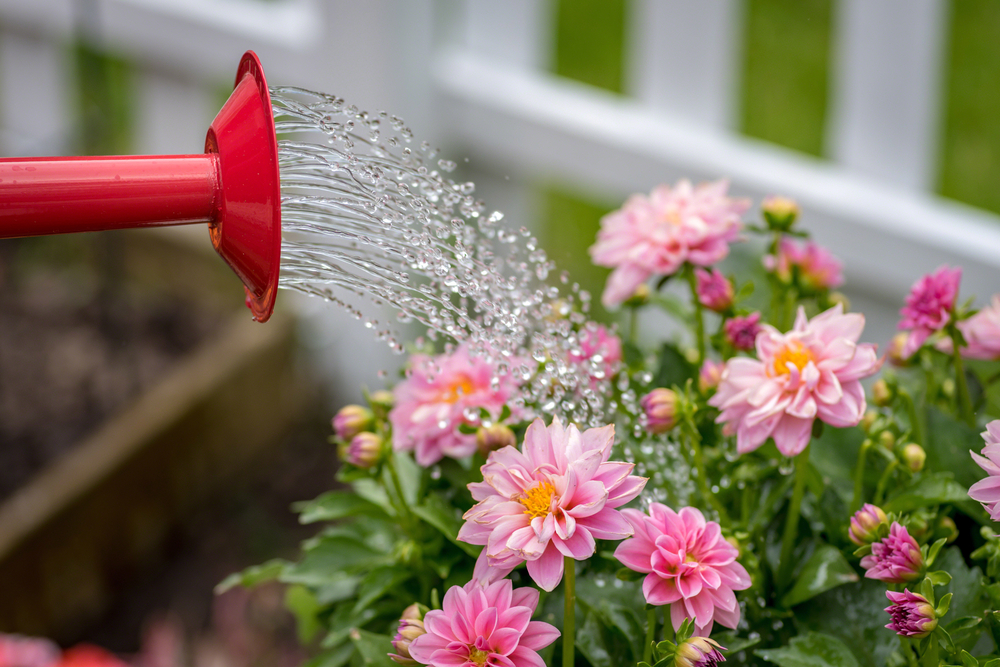
Once the plants have reached 12 inches, you can pinch your plants. Pinching is a technique that forces your dahlia to branch from the bottom and creates more stems. This is a technique used by cut flower growers as it yields more blooms per plant.
Pinching your dinner plate dahlia plant gives you a bushier plant with more, but slightly smaller blooms. If you choose not to pinch your plant, you will get a large single-stemmed plant with one massive bloom at a time.
Harvesting Dinner Plate Dahlias
Now that your dinner plate dahlia is happily growing and blooming, you can harvest some flowers to bring into your home.
For the best cut, choose flowers that are almost fully open but not yet fully blown. They will continue to open in the vase. The petals at the back of the flower head should be firm and shouldn’t fall off when you handle the flower.
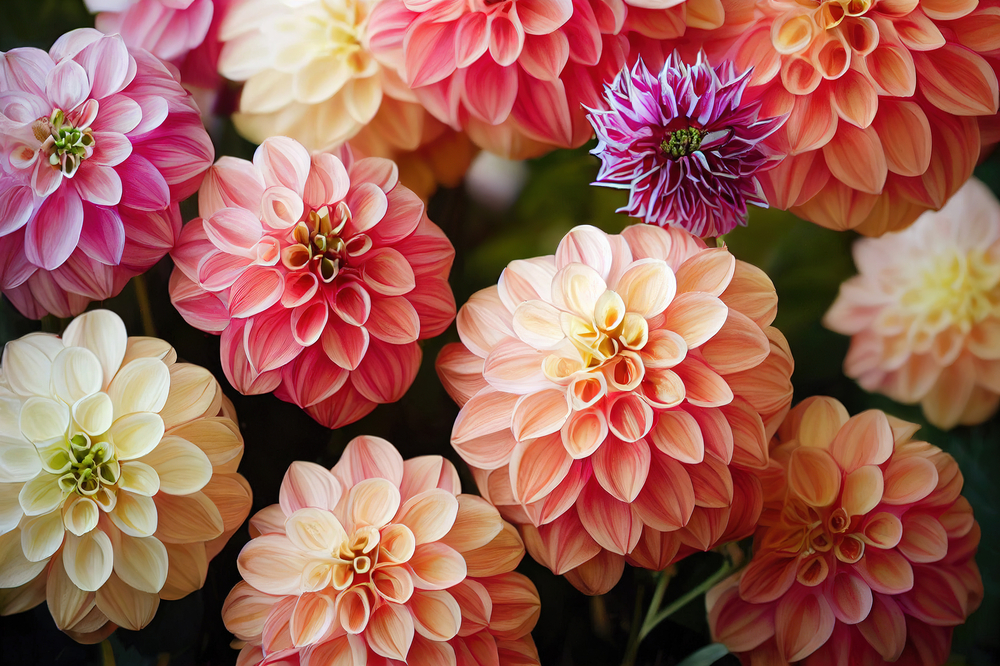
With sharp snips, cut deep into the plant above a leaf axle. This will encourage the plant to re-sprout closer to the ground and will give you a sturdier plant with stronger, longer stems.
It is tempting to only cut the stem length that you want, but in the long run, cutting deeper into the plant will give you an overall healthier and more productive dinner plate dahlia plant.
Once you’ve harvested your flowers, recut the stems and place them in cool water in a clean vase of your choice. For the longest vase life, keep them in a cool location out of the direct sun. Your flowers can also be used to create a stunning dinner plate dahlia wedding bouquet.
Winter Care & Storage
Dinner plate dahlias are marginally hardy. If you live in zones 8-10, you can generally leave them in the ground over winter. A thick layer of mulch overtop will help insulate them over the winter.
However it is important to remember that dahlia tubers are prone to rot, so if your soil holds a lot of water over the winter, it’s best to dig them up to avoid losing them. If you want to grow your dinner plate dahlia as a perennial, it’s best to dig the tubers every few years in the spring, divide them and replant in smaller clumps.
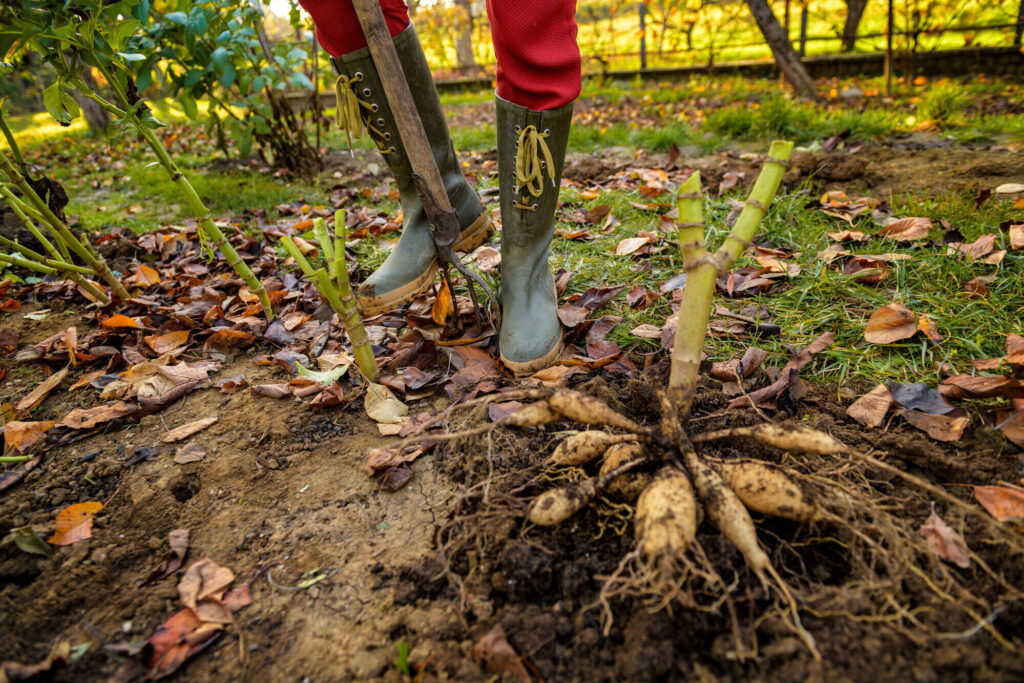
In all other zones, dinner plate dahlia tubers should be dug in the fall if you want to keep them over the years. Once the first frost hits, your dinner plate dahlia plants will turn black. Once the foliage has turned black, you should cut back the foliage to 6 inches.
It is best to wait for about two weeks after the first frost to dig up your dahlias. This waiting period cures the tubers so they will store over winter better.
After the two-week curing period, carefully dig your tubers out with a digging fork. They should be left in a cool spot with good ventilation for up to two days to allow them to dry. Do not place them directly on concrete at this time as the concrete will desiccate your tubers. Once they are dry, you can cut off the thick stems and pack the tubers in newspaper, peat, sand or perlite and place them in crates to overwinter.
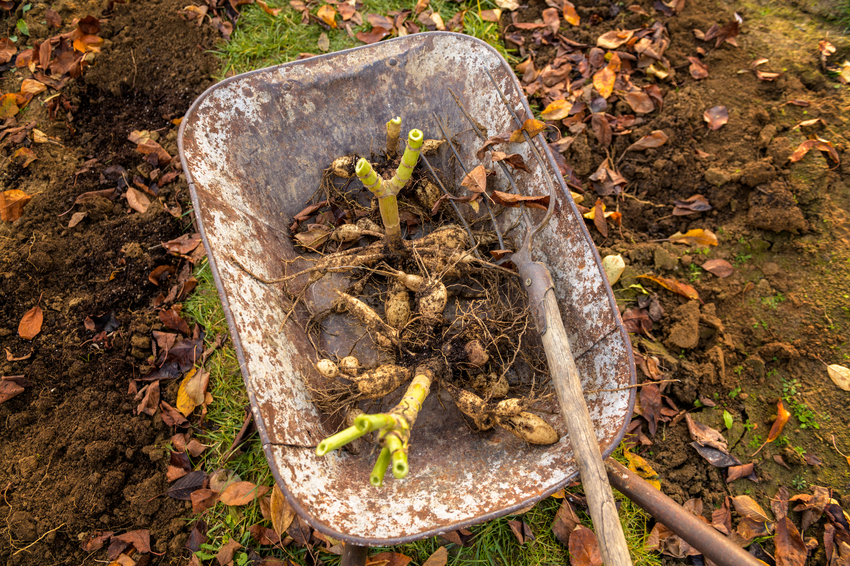
These crates should be kept in a cool spot that stays around 40-45 degrees F. A basement or garage is ideal, as long as it won’t freeze. If your storage space is prone to moisture or mold, you might consider occasionally putting a dehumidifier on. In the spring, you can bring your dahlias out of storage and plant them again for another season of beauty!
Some Notable Dinner Plate Dahlia Cultivars
Café au Lait
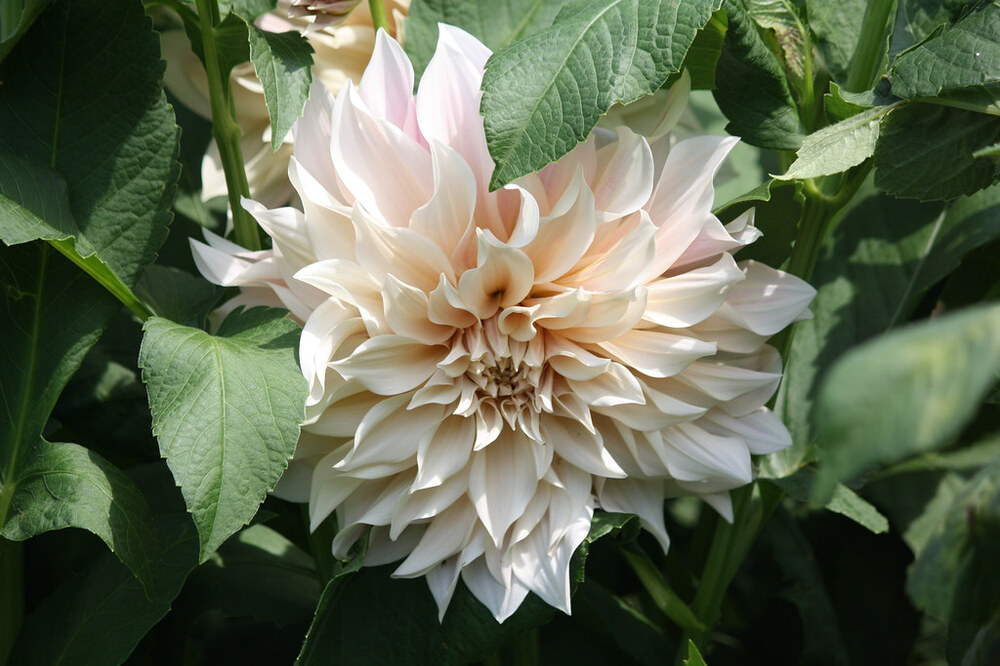
Possibly the most well-known dinner plate dahlia. This variety has soft, blush pink petals that fade to creamy beige in the center. It’s a popular choice for weddings and other special events.
Babylon Bronze
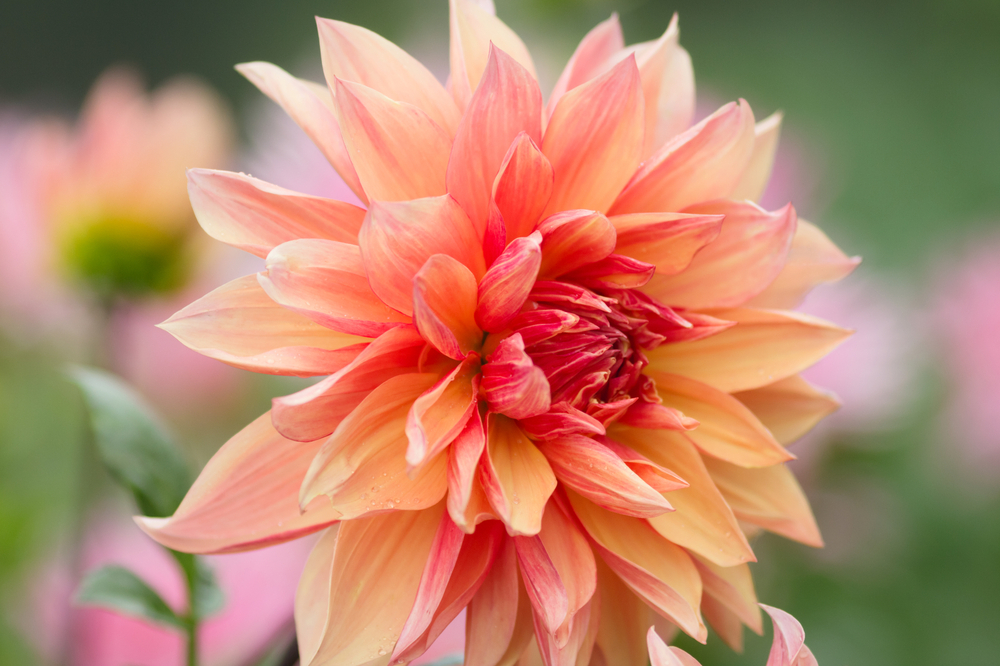
This variety is a peachy orange dinner plate dahlia. The blooms face slightly upwards on strong stems making it ideal for bouquets.
Thomas Edison
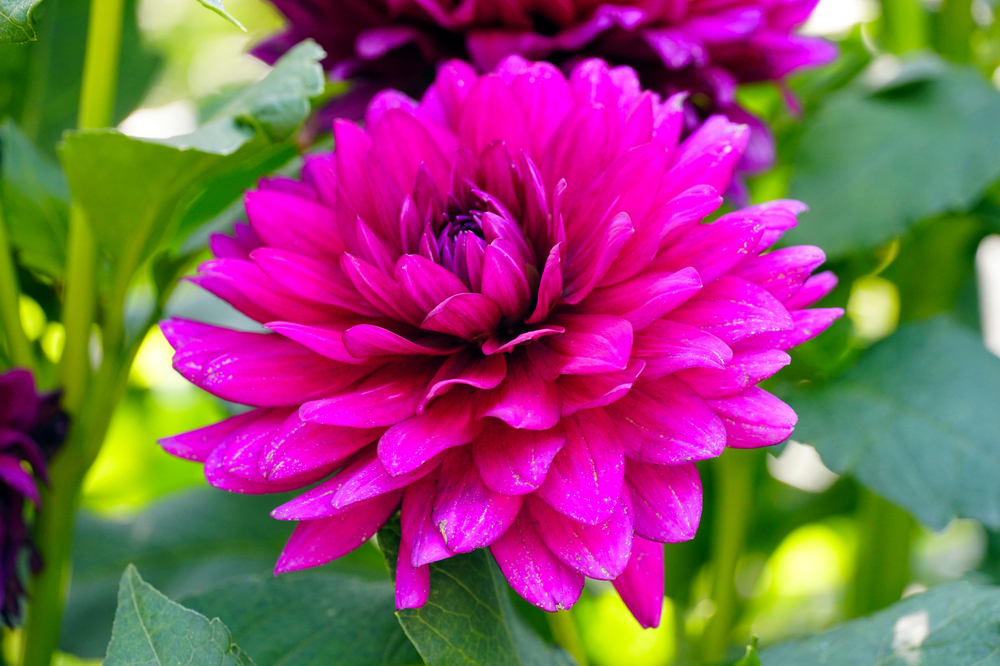
A deep, rich purple dinner plate dahlia with a dark center. Its 8” blooms will add a dramatic splash of color to your dahlia garden.
Otto’s Thrill
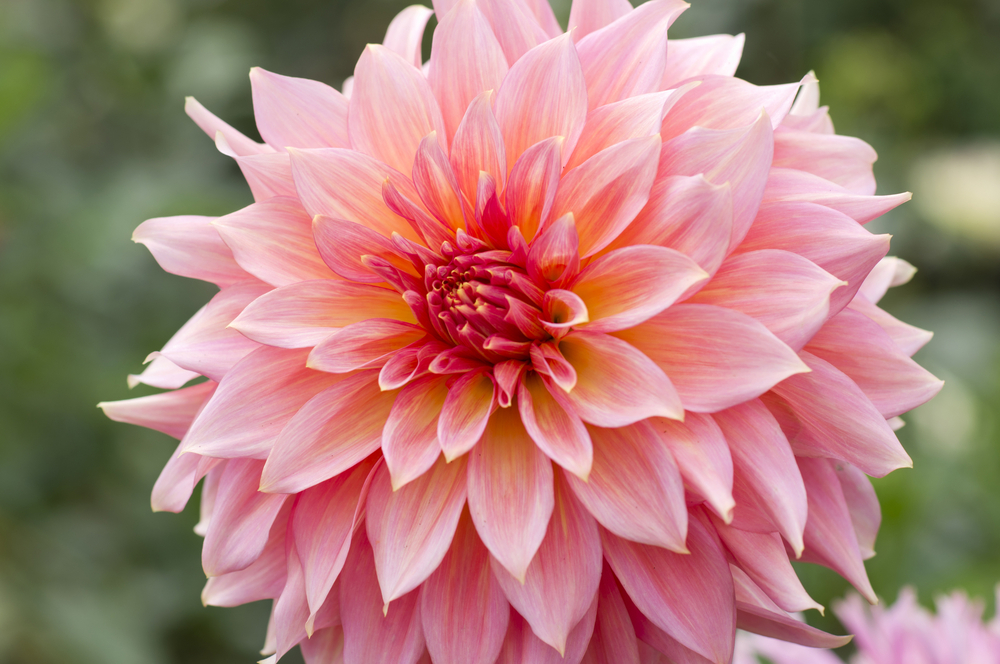
A vibrant, rosy pink dinner plate dahlia with 8” blooms on strong stems. A great addition to wedding bouquets.
Kelvin Floodlight
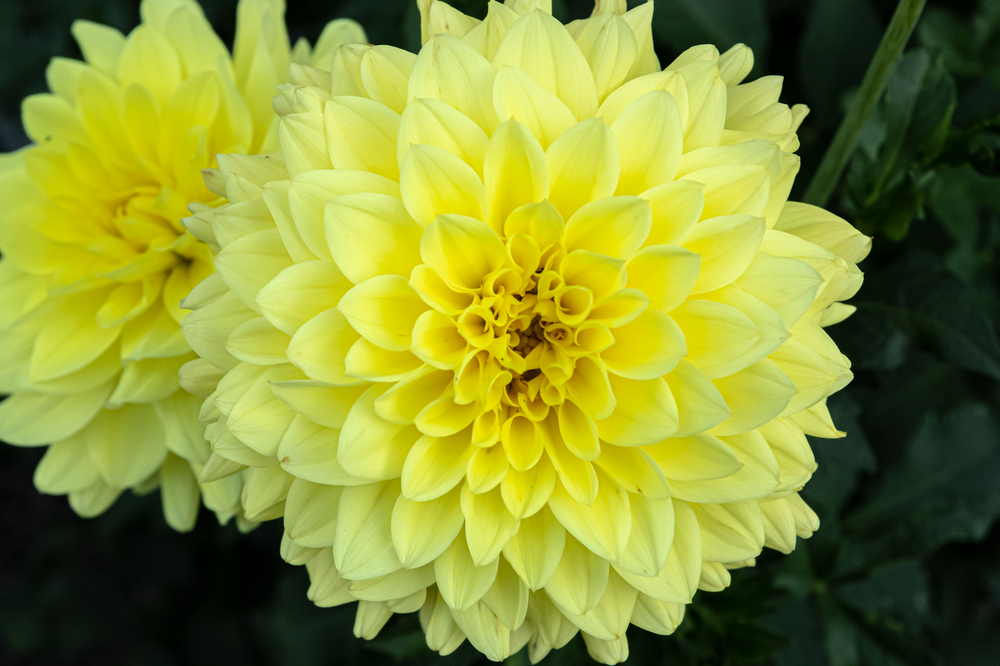
A massive butter yellow dinner plate dahlia with blooms reaching up to 12’’. This variety has won numerous awards at dahlia shows across North America.
Fleurel
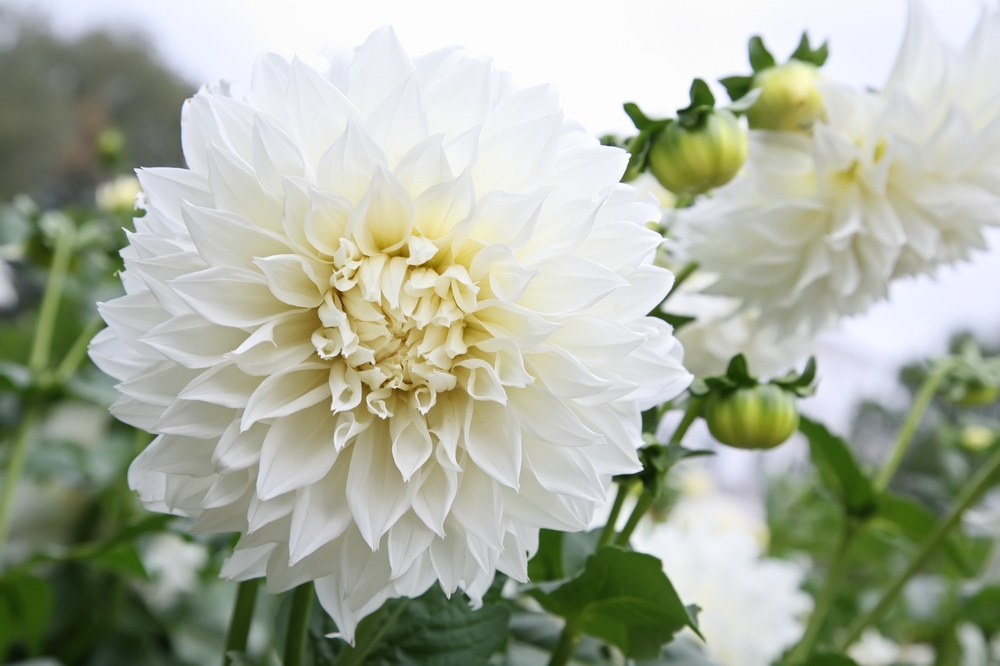
A stunning white dinner plate dahlia with a touch of cream in the center. 8” blooms pair nicely with ‘Kelvin Floodlight’, both in the garden and the vase.
Frequently Asked Questions (FAQ) About Dinner Plate Dahlias
Where do I buy dinner plate dahlia bulbs?
A common misconception is that dahlias grow from bulbs. Contrary to popular belief, dinner plate dahlias are grown from tubers rather than bulbs.
This is an advantage because tubers, unlike bulbs, grow and multiply over the years so you can increase your stock of dinner plate dahlia plants by dividing your tubers each year.
Dahlia tubers can be purchased in the spring from most garden centers in your area. You often can order specialty varieties from flower farms, however, the most coveted varieties are sold quickly.
To avoid disappointment, you should sign up for newsletters from local flower farms so you know when their dinner plate dahlia tubers go on sale.
Is there a blue dinner plate dahlia?
There is no true blue dinner plate dahlia. The cultivar ‘Blue Boy’ may be the closest match with its large pale purple blooms.
Image Credit: Depositphotos & Flickr
